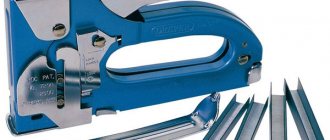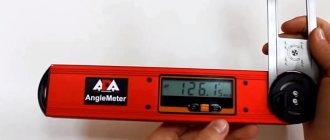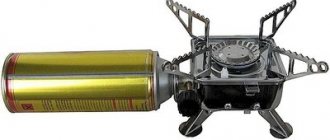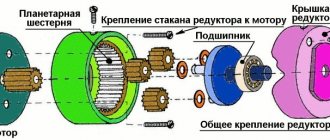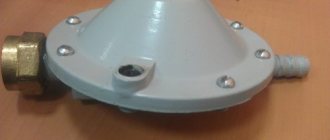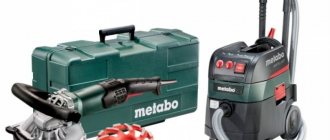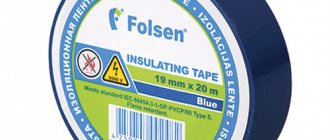The gear ratio is the ratio of the rotation of the cardan to the rotation of the wheels. In other words, how many revolutions must the driveshaft make for the wheels to turn one revolution?
In most cases, you don't need to know this number; people can drive a car for years and not know what gear ratio their car has. But if you are repairing your Niva yourself, then you may need this knowledge: the Niva has permanent all-wheel drive (the front and rear gearboxes are constantly under load) and the gear ratios of the gearboxes should be the same.
It happened to me that while fishing I got into heavy mud. Thick, sticky...
I turned on the transfer case lock and the front gearbox began to crack almost immediately.
I still got out of that mud, with a bang for the whole forest, but I got out.
I had to drive home with the lock on: when you turn off the lock, it rattles, but doesn’t move!
I came home and needed to take it apart and see if it could be repaired or replaced. A relative stopped by and advised me to immediately buy a “six” gearbox and change it, what do I think... Why “six”? — Because the 20213 Niva is equipped with a “six” gearbox.
I say: I don’t know the seller, I didn’t buy it in our village. What if he didn’t supply the one he needed, but the one he had at hand, just to sell? - Can't be. - Why? — Because the 213th is equipped with a “six”. This is somehow unconvincing.
I have never heard of anyone trying to install different gearboxes on a Niva, but theoretically, if you install different ones, it will still drive. Due to the differential in the transfer case. Until you block the transfer case. After this, something should break off. It's hard to say what exactly, but it will find the weak link.
And what’s interesting: I understand that the gearboxes should be the same, but a stupid thought came into my head and I can’t get rid of it. It seems like I’ve already turned on the lock on the transfer case, everything works, but there are some excuses in my head, like the road there was slippery, maybe that’s why it held up...
In short, I need to make sure that my gearboxes are the same, otherwise I won’t get rid of this stupidity, i.e. in my case, you need to install the same gearbox on the front as the one on the back.
In any case, you have to disassemble the front one, but how can you find out which gearbox is in the back without disassembling it? In this case, you need to calculate the gear ratio.
And it has nothing to do with the gearbox or transfer case!
What is a gear ratio?
The most important characteristic of any gearbox is the “gear ratio”. Which is determined by the ratio of the number of teeth on the drive and driven gears.
Two outwardly absolutely identical gearboxes of the same make and model of car can differ in gear ratio and be non-interchangeable.
Therefore, before purchasing/replacing a faulty gearbox (or when replacing the main pair during its repair) on any car, especially one with a drive on both axles (both axles), it is necessary to determine the gear ratio (number of teeth) of your gearbox.
Also, if you intend to purchase a contract (used) or new gearbox and the seller cannot tell you anything about its gear ratio, then you should refuse the purchase. You don’t fill up your car with fuel without indicating its brand on the pump??? Here the consequences of the error will be more destructive.
The seller’s assurances that the gearbox he sells is from a car with the same engine as your car (and therefore will suit you) should be unconvincing for you, because:
- first of all, in most cases it is almost as if he were assuring you that the gearbox he is selling is the same color as your car. (There are manufacturers who install gearboxes with different gear ratios on a car with the same engine in different years of manufacture)
- secondly, it does not guarantee that this is true (a mistake or deception is possible in order to sell quickly...), or that the previous owner of the car (sold for parts by the seller) did not change the gearbox to another with a different gear ratio (on purpose or by accident).
General definition
A clear example of changing the number of revolutions is most easily observed on a simple bicycle. A man pedals slowly. The wheel rotates much faster. The change in the number of revolutions occurs due to 2 sprockets connected in a chain. When the large one, which rotates with the pedals, makes one revolution, the small one, standing on the rear hub, rotates several times.
Torque transmissions
The mechanisms use several types of gears that change torque. They have their own characteristics, positive qualities and disadvantages. Most common transmissions:
Belt drive is the simplest to implement. It is used when creating homemade machines, in machine tools to change the speed of rotation of the working unit, in cars.
The belt is tensioned between 2 pulleys and transmits rotation from the driver to the driven. Performance is poor because the belt slides on a smooth surface. Thanks to this, the belt assembly is the safest way to transmit rotation. When overloaded, the belt slips and the driven shaft stops.
The transmitted number of revolutions depends on the diameter of the pulleys and the coefficient of adhesion. The direction of rotation does not change.
The transitional design is a belt gear drive.
There are protrusions on the belt and teeth on the gear. This type of belt is located under the hood of the car and connects the sprockets on the axles of the crankshaft and carburetor. When overloaded, the belt breaks, since it is the cheapest part of the unit.
1st method - catalogue.
Without leaving home. This method is the easiest, but not the most reliable. Often requires double-checking using the other methods outlined below. It is also not always possible to obtain complete information (the gear ratio itself) - but only the OEM number of the main pair, more on that below.
According to the VIN of the car. We write off the VIN number from the Vehicle Registration Certificate
.
.
.
And we enter it into the search form by VIN in the corresponding brand from the online catalog located on the website of the Exist store. (registration on the site may be required)
Click the Search button and get open information on your car:
We open the corresponding group of spare parts (Transmission), and in it we find the “differential” tab, if you do not use an online page translator (catalogues are displayed in English) - then focus on the combination of words (or one of these words) FRONT DIFF GEAR if want to open the front gearbox or REAR DIFF GEAR if you want to open the rear gearbox. And click on this inscription.
A map opens to us - details of the unit (in our case, the gearbox). We find the final drive gears on it and click on its spare parts list number.
We see (in the list on the left) the original part number. Attention! If the number does not open or does not open entirely (there are no numbers in the middle of the number), then you need to register on the website of this catalog (free of charge).
Note! Two numbers of this part have opened in the catalog at once (and for some brands - for example , such as Mercedes Benz, 5 - 8 parts can be opened).
Next, you need to determine the number you need. In this example, you see that opposite each number there is a column of additional information, which indicates the type of gearbox - AT (Automatic Transmission) or MT (Manual Transmission). Knowing the type of gearbox installed on your car, you can easily determine the desired number of the main pair.
Why only the number??? Where is the gear ratio???
For some car brands (Toyota, Mercedes Benz) the gear ratio is immediately written down in the catalog, for some this information is not available - in this example, for the SUZUKI brand, this is exactly the case.
But the OEM part number you receive is already half the battle.
Using this number, the seller must determine the gear ratio you need using his information (experience).
Also be careful when finalizing the part number. As you noticed, at the last stage - when several part numbers are opened at once (in this example, we were faced with the simplest choice - according to the type of gearbox, and often the choice is more complex according to different criteria / vehicle equipment) - you can easily make a mistake and buy unsuitable part.
There is also a possibility that the characteristics of the gearbox (gear ratio) currently installed on your car do not correspond to what is specified in the catalog, since it was replaced (erroneously or on purpose) by the previous owner with a gearbox with a different number of teeth, and if you have a car with both drive axles, that is, it is likely that you have them with different gear ratios (perhaps this is why your gearbox failed), by making a mistake in purchasing a gearbox (with the wrong gear ratio) - you will not eliminate the root cause of the malfunction, and it may recur .
It is also rare, but there are errors in the directories themselves.
Therefore, if the number is not clearly determined, or you are not sure that the gearbox on your car has not been changed, use (double-check it) the methods described below, the 4th method is especially reliable.
Explosion-proof versions of gearmotors
Geared motors of this group are classified according to the type of explosion-proof design:
- “E” – units with an increased degree of protection. Can be used in any operating mode, including emergency situations. Enhanced protection prevents the possibility of ignition of industrial mixtures and gases.
- “D” – explosion-proof enclosure. The housing of the units is protected from deformation in the event of an explosion of the gear motor itself. This is achieved due to its design features and increased tightness. Equipment with explosion protection class “D” can be used at extremely high temperatures and with any group of explosive mixtures.
- “I” – intrinsically safe circuit. This type of explosion protection ensures the maintenance of explosion-proof current in the electrical network, taking into account the specific conditions of industrial application.
2nd method - by nameplate
The most reliable and simplest.
Read the information on the nameplate of your gearbox.
Some manufacturers (Mitsubishi, Mercedes Benz and others) attach such a nameplate (sticker) to the gearbox, or make an engraving on the gearbox housing, which contains important information about the gearbox, including the gear ratio. It is enough to find this nameplate (sticker) on the gearbox or the engraving and read what you need on it - of course, provided that the sticker or engraving has been preserved.
There is a very small probability that the inscription on the nameplate does not correspond to the actual characteristics of the gearbox because the gearbox was rebuilt and the main pair with a different gear ratio was installed; of course, no one corrected the information on the nameplate, or the cover with the attached nameplate was changed, and the nameplate indicates characteristics of the gearbox from which the cover was removed.
Note! A nameplate (sticker or riveted plate) or engraving may contain the necessary information. But not the numbers/letters made on the body of the gearbox housing by casting. Such numbers/letters carry technological information about the body casting itself (it is in no way linked to the number of teeth on the main pair). Simply put, it is not possible that when casting a cast iron housing, they would know in advance with which power supply the pair will be installed in this housing.
How do the ages of humans and cats compare after 12 years?
It is believed that 12 years for a cat is the same as 60-64 years for a person. The animal becomes a “pensioner”: it moves little and not very willingly, it has difficulty withstanding changes in life, it gets sick more often and longer. But some cats remain cheerful and energetic even at this age, just like perfectly preserved people. A fifteen-year-old cat and a 76-year-old man are approximately equal in health and reserve of vitality. Well, animals aged 18-20 years are found with the same frequency as long-lived people over 90 years old. Video on the topic Please note! By upgrading from a four-speed transmission to a five-speed, you'll have to change gears less frequently and can increase your top speed across the entire gear.
3rd way - count.
The most reliable, but not suitable for counting numbers on a car (without disassembling the bridge).
Count the number of teeth on both gears of your gearbox, and divide the number of teeth on the large gear (driven) by the number of teeth on the small gear (drive), the resulting number will be the gear ratio. But for this, the gearbox must already be removed from the machine. Often this method is not suitable due to the cost of the process of removing and installing the gearbox.
But it is most suitable for the case when the gearbox has already been removed from the car.
Gearbox torque
Torque on the output shaft [M2] – torque on the output shaft. The rated power [Pn], the safety factor [S], the estimated service life (10 thousand hours), and the efficiency of the gearbox are taken into account.
Rated torque [Mn2] – the maximum torque that ensures safe transmission. Its value is calculated taking into account the safety factor - 1 and the service life - 10 thousand hours.
Maximum torque {M2max] – the maximum torque that the gearbox can withstand under constant or changing loads, operation with frequent starts/stops. This value can be interpreted as the instantaneous peak load in the operating mode of the equipment.
Required torque [Mr2] – torque that meets customer criteria. Its value is less than or equal to the rated torque.
Design torque [Mc2] – the value required for selecting a gearbox. The estimated value is calculated using the following formula:
Mc2 = Mr2 x Sf ≤ Mn2
where Mr2 is the required torque; Sf – service factor (operational coefficient); Mn2 – rated torque.
4th – method – calculated
Requiring an inspection hole, a jack and certain skills.
You can calculate the gear ratio by rotating the gearbox by one drive wheel and calculating the ratio of the number of revolutions made by the gearbox flange to the number of revolutions made by the wheel.
To do this you need:
- Visit the viewing hole
- Secure the vehicle with a wheel chock
- put the gearbox in neutral position
- Jack up one drive wheel (Attention! if the car has two drive axles, then it is better to calculate the gear ratio on a working axle), and put marks (with chalk) on the wheel and on the floor so that they match.
- We go down into the inspection hole and make a similar mark on the flange and gearbox housing.
Attention! Both marks (on the wheel and on the cardan) must match before starting the countdown.
- The next stage is performed with an assistant (although if you put a mark on the wheel from the inside (from the gearbox side), you can do without an assistant). One person rotates the raised wheel (in any direction), and out loud counts the number of full revolutions of the wheel made.
- And the second person at this time, also out loud, counts the number of revolutions made by the cardan. If you carry out calculations without an assistant, you will have to simultaneously count the revolutions made by the wheel and the cardan.
- It is important to keep counting until both marks match as accurately as possible (as they were originally set). At this moment, you need to stop the rotation of the wheel and remember/write down the calculated number of revolutions made by the wheel and the gearbox flange. The more accurately you achieve a match of the marks, the more accurate the calculation will be. You can be sure that on any car these marks will sooner or later match as accurately as possible. The greatest probability is that this will happen from the 16th to the 22nd revolution of the wheel.
- As a result, we got two numbers. 16 and 39 which will allow us to determine the gear ratio of this gearbox. Please note that the figures obtained are not the gear ratio or the number of teeth of the main pair of this gearbox - these are just calculated figures.
- Attention!!! When counting the number of wheel/flange revolutions made, be as accurate and attentive as possible!!! The slightest mistake (in the number of calculated revolutions) can lead to the purchase of an unsuitable gearbox!!! If in doubt, it is better to repeat the calculation once again.
The final calculation of the gear ratio using the formula
Since the mechanics of the differential operation of any gearbox is such that when one wheel rotates (as we did), the number of its revolutions doubles, we will need to make an adjustment to the obtained calculated figures (revolutions).
We adjust the number of wheel revolutions; to do this, the resulting number of wheel revolutions must be divided by 2. Example: 16/2=8. Finally we get two numbers 8 and 39.
To obtain the gear ratio, you need to divide the number of revolutions of the cardan (the larger number) by the number of revolutions made by the wheel (the smaller number)
Example: 39/8 = 4.875
The resulting number 4.875 is the gear ratio of your gearbox.
When purchasing a gearbox, please provide this number to the seller.
The essence of the parameter
The essence of gear ratios is the ratio of the frequency (speed) of rotation of the input shaft and the low-speed one (at the output). To simplify, we can say this: the characteristic determines the number of full revolutions that the input shaft must make while the low-speed one makes 1 revolution.
This characteristic is indicated in the designations of the mechanisms. Example for a model with a worm gear: Ch-100-50. Here the indicator we are interested in is listed last and means that while the output shaft makes 1 revolution, its high-speed “colleague” manages to “wind up” 50 circles.
5th - method - special for Volkswagen Touareg / Porsche Cayenne brands
For a given make/model of car, there is a table of codes from which you can determine the gear ratio.
Each gearbox (of this brand) has a code marking in which the gear ratio of the gearbox is encrypted
Location of this marking: the lower part of the gearbox - near the oil drain plug.
Photo of marking location:
Gearbox - general view from below
Marking:
Tell us your gearbox number and we will tell you the gear ratio.
Operational coefficient (service factor)
Service factor (Sf) is calculated experimentally. The type of load, daily operating duration, and the number of starts/stops per hour of operation of the gearmotor are taken into account. The operating coefficient can be determined using the data in Table 3.
Table 3. Parameters for calculating the service factor
| Load type | Number of starts/stops, hour | Average duration of operation, days | |||
| <2 | 2-8 | 9-16h | 17-24 | ||
| Soft start, static operation, medium mass acceleration | <10 | 0,75 | 1 | 1,25 | 1,5 |
| 10-50 | 1 | 1,25 | 1,5 | 1,75 | |
| 80-100 | 1,25 | 1,5 | 1,75 | 2 | |
| 100-200 | 1,5 | 1,75 | 2 | 2,2 | |
| Moderate starting load, variable mode, medium mass acceleration | <10 | 1 | 1,25 | 1,5 | 1,75 |
| 10-50 | 1,25 | 1,5 | 1,75 | 2 | |
| 80-100 | 1,5 | 1,75 | 2 | 2,2 | |
| 100-200 | 1,75 | 2 | 2,2 | 2,5 | |
| Operation under heavy loads, alternating mode, large mass acceleration | <10 | 1,25 | 1,5 | 1,75 | 2 |
| 10-50 | 1,5 | 1,75 | 2 | 2,2 | |
| 80-100 | 1,75 | 2 | 2,2 | 2,5 | |
| 100-200 | 2 | 2,2 | 2,5 | 3 | |
Where is?
We seem to have figured out the purpose of the car’s main gear; now it would be nice to find it. Doing this can be a difficult task, because the location of this unit can be different and depends on the type of machine drive and the imagination of the development engineers.
Fortunately, the flight of thoughts here is limited by the number of axes. So, for example, if we have front-wheel drive, then in this case the main gear of the car should be looked for in the gearbox along with the differential, in vehicles with rear drive wheels - directly in the rear axle. If all four are leading, then choose one of the above options.
Gear ratios (row)
Gear ratios are the gears of each gear, which also have their own size.
Gear ratios characterize the speed characteristics of a car in a particular gear. In a standard VAZ, the following numbers are used:
| Gearbox ratios: | |
| I | 3,636 |
| II | 1,95 |
| III | 1,357 |
| IV | 0,941 |
| V | 0,784 |
| reverse | 3,53 |
The characteristics shown above are just with standard gear ratios.
The standard range on the 2114 is far from ideal: First gear is too short – second gear is too long. Due to this, there is a sharp drop in dynamics when switching from first to second. Not only is there a failure, but when switching sharply, the second gear synchronizer slowly dies.
Therefore, there are sports series where the gap between 1st and 2nd is removed, and not only: sports series are selected according to the type of engine: it can just be a good city engine, or a sports one, or tailored for 402-meter racing. There are also “turbo” gears - designed for a turbo engine.
